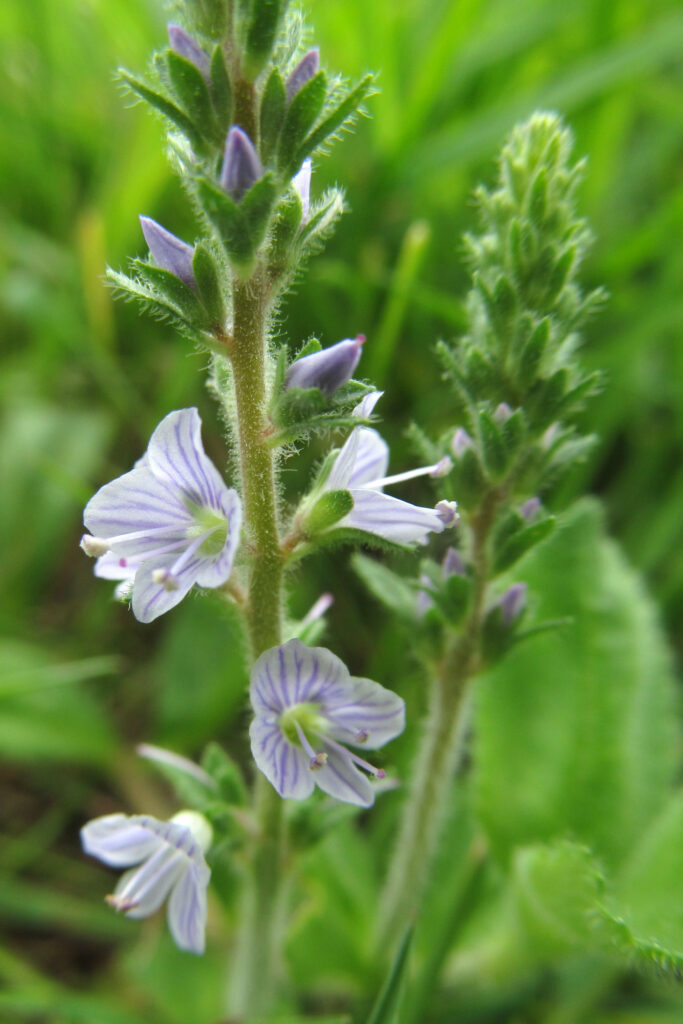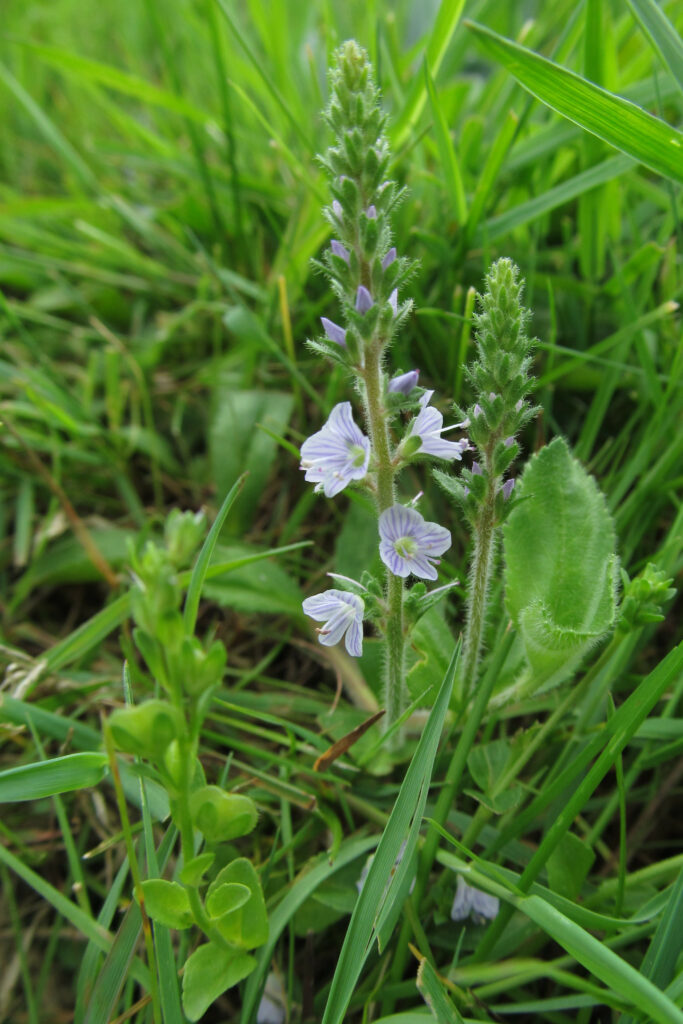
Tiny lawn weeds that reveal lavender stripes when we look at them closely. These were growing beside a sidewalk in Verona.


For a description of the species, see the Veronica officinalis reference page.

Tiny lawn weeds that reveal lavender stripes when we look at them closely. These were growing beside a sidewalk in Verona.


For a description of the species, see the Veronica officinalis reference page.

If these were larger, they might be treasured garden flowers. They are found everywhere in our lawns, and they are small enough that it takes a good close look to notice the delicate violet stripes on the flowers. The plant is fuzzy, with oval leaves and rambling stems; it is short enough to pass easily under lawn-mower blades. You can find it blooming from mid-spring through summer; these plants were blooming in West End Park in late May.

Gray describes the genus and the species:
VERONICA [Tourn.] L. SPEEDWELL The lateral lobes of the corolla or the lowest one commonly narrower than the others. Stamens 2, one each side of the upper lobe of the corolla, exserted; anther-cells confluent at the apex. Style entire; stigma single. Capsule flattened, obtuse or notched at the apex, 2-celled, few-many-seeded. – Chiefly herbs; flowers blue, flesh-color, or white. (Derivation doubtful; perhaps the flower of St. Veronica.)
Corolla wheel-shaped, the tube short; capsule more or less notched, strongly flattened; low or decumbent herbs.
Perennials, stoloniferous or rooting at base, with opposite usually serrate leaves, racemes axillary, mostly opposite; corolla pale blue.
V. officinalis L. (COMMON S.) Pubescent; stem prostrate, rooting at base; leaves short-petioled, obovate-elliptical or wedge-oblong, obtuse, serrate; racemes densely many-flowered; pedicels shorter than the calyx; capsule obovate-triangular, broadly notched. — Dry hills and open woods, Nfd. to Ont., Mich., and southw. May-Aug. (Eurasia.)